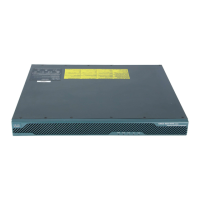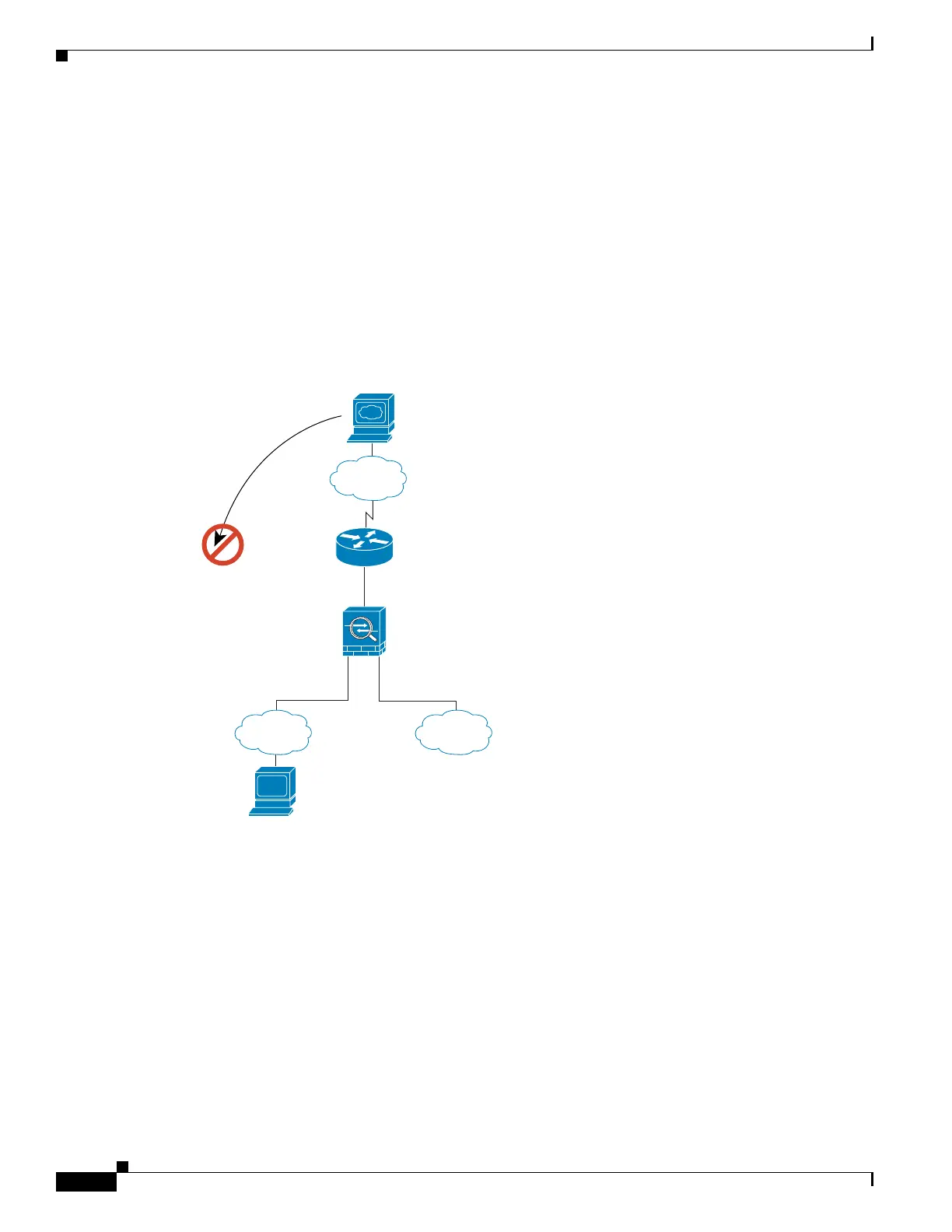5-18
Cisco ASA 5500 Series Configuration Guide using ASDM
OL-20339-01
Chapter 5 Configuring the Transparent or Routed Firewall
Firewall Mode Examples
3. The adaptive security appliance then records that a session is established and forwards the packet
out of the DMZ interface.
4. When the DMZ web server responds to the request, the packet goes through the fast path, which lets
the packet bypass the many lookups associated with a new connection.
5. The adaptive security appliance forwards the packet to the inside user.
An Outside User Attempts to Access an Inside Host
Figure 5-5 shows an outside user attempting to access the inside network.
Figure 5-5 Outside to Inside
The following steps describe how data moves through the adaptive security appliance (see Figure 5-5):
1. A user on the outside network attempts to reach an inside host (assuming the host has a routable
IP address).
If the inside network uses private addresses, no outside user can reach the inside network without
NAT. The outside user might attempt to reach an inside user by using an existing NAT session.
2. The adaptive security appliance receives the packet and because it is a new session, the adaptive
security appliance verifies if the packet is allowed according to the security policy (access lists,
filters, AAA).
3. The packet is denied, and the adaptive security appliance drops the packet and logs the connection
attempt.
www.example.com
User
10.1.2.27
209.165.201.2
10.1.1.110.1.2.1
Outside
Inside DMZ
92407

